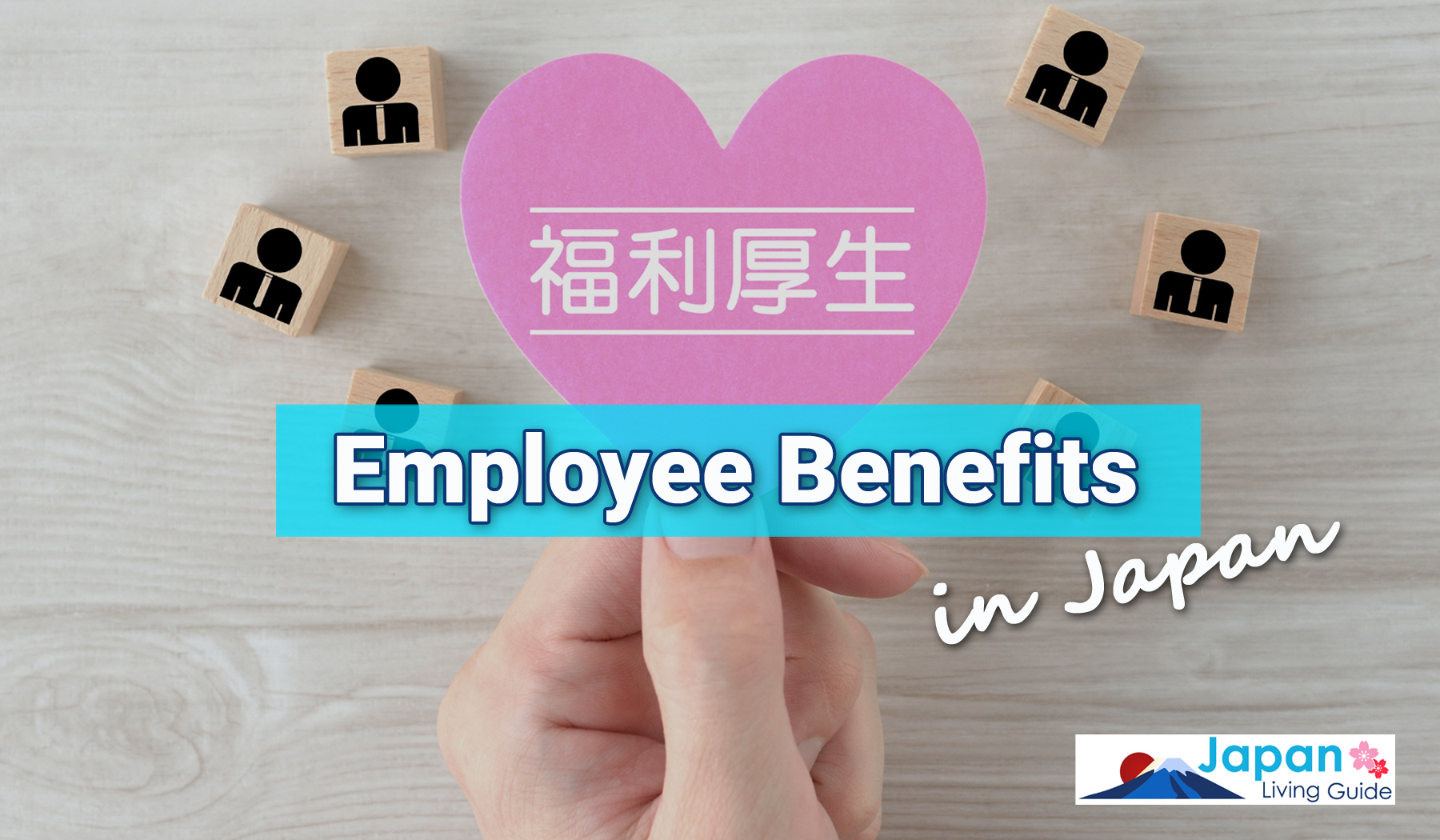Employee Benefits in Japan: Understanding the Fukuri Kosei System

Working in Japan can be a very different experience compared to working in a Western country, and it can be hard to know what benefits you may be entitled to. In this article, we are covering what you need to know about Japan’s employee benefits system, called Fukuri Kosei. Knowing this important information can help you stay up to date on whether or not you are receiving the full benefits you are entitled to as well as better negotiate your next job offer in Japan.
If you are looking for a job in Japan, be sure to check our lists of job search websites and recruitment agencies, as well as articles on Japanese resumes, how to find English speaking jobs for foreigners, and more.

Fukuri Kosei (Employee Benefit System in Japan)
Fukuri Kosei can be defined as any form of compensation or benefit you receive from your employer in Japan, outside of your set wages. This can include anything from transport allowances, types of leave, and insurance. Some of these benefits are mandated by law, so they are required for companies to provide them to eligible employees, while others are optional.
The benefits offered by a company can provide a great draw for attracting new employees, and legally mandating some benefits allows for a minimum standard to be set and maintained.
What Are the Statutory Employee Benefits in Japan?
Many of the statutory employee benefits in Japan surround various types of insurance that protect the employee and employer from costs they may occur in case of unexpected circumstances. Below is a general overview of employee benefits in Japan. Please note that there are certain eligibility requirements such as number of working hours, duration of employment, etc.
Health Insurance (Kenko-Hoken)
Health insurance is one of the most important benefits to be offered in Japan. All residents of Japan are required to be covered by health insurance. If your health insurance is through your employer, which is the case if you meet eligibility requirements, both you as the employee and the company each pay 50 percent of the insurance premiums.
Employees' Pension Insurance (Kosei-Nenkin-Hoken)
In Japan, eligible employees under the age of 70 years old such as those working full time, three-fourth or more of full time employees, etc., are required to join employees' pension insurance. The premiums are split 50 percent between the employer and the employee. To learn about pension system in Japan, please check this article.
Unemployment Insurance (Koyo-Hoken)
Unemployment insurance in Japan provides support in cases where the employee loses his or her job and is split between the employer and the employee.
Workers’ Accident Compensation Insurance (Rosai-Hoken)
Workers’ accident compensation insurance in Japan covers the costs of any accidents or incidents that cause injury to an employee while at the workplace or on his or her way to or from the workplace. The insurance cost is fully covered by the employer.
Nursing Insurance (Kaigo-Hoken)
Nursing insurance in Japan covers the cost of any longer-term nursing that should be deemed necessary. Residents of 40 years old and older have to pay into nursing insurance. In case of employees from 40 to 64 years old, the premiums are equally split between the employer and the employee.
Child and Child Care Contribution (Kodomo / Kosodate Kyoshutsu-Kin)
Child and child care contribution is paid by the employer. It is used for child allowances, etc.
What Are the Non-statutory Employee Benefits in Japan?

While the benefits listed above are statutory, meaning they are legally required, it is also common for companies in Japan to offer additional benefits. They are not required, but most companies will find it difficult to attract good candidates without at least a standard range of benefits offered. Some of the most common benefits include housing allowance, transport allowance, and more.
Housing Allowance
Housing allowance differs depending on the company but often consists of subsidized housing, rent assistance, or home ownership assistance.
Transport Allowance
Transport allowance is standard in Japan and fully covers public transport costs (or gas if traveling by car) for travel to and from work. Depending on the company, there may be a certain upper limit for coverage of transportation costs.
Less Common Employee Benefits
In addition to the optional benefits above, a company may also offer the following:
- Regular health checkups
- Allowances for self-development and skill enhancement
- Subsidies for meals in a company cafeteria
Some other less common benefits include subsidized or free use of outside services, such as sports clubs, swimming pools, certain restaurants, and more. These are more common in companies that own or invest in a wide range of businesses.
Travel and company trips can be another benefit offered to employees. However, the primary focus of the trips is still typically business oriented. This is generally considered a good way to bond with your immediate team and get to know other employees in the company. It can also be good for brainstorming and other more creative ventures.
In recent times, some companies have started offering a working-from-home allowance covering several expenses and equipment that are necessary for working from home, such as a computer, appropriate desk and chair, and similar items.
Taking Leave from Work in Japan

While it is not considered part of the Fukuri Kosei system, there are some types of leave that are mandatory under Japanese law. As it was the case with the Fukuri Kosei system, there are also certain eligibility requirements for various types of leaves. Below, we will list some of the leaves that can be taken in Japan.
Annual Paid Leave
Full time employees in Japan are entitled to 10 days of paid leave after the first 6 months with the company provided that they worked at least 80 percent of working days during this period. This increases yearly up to 20 days of paid leave. However, there is no separate sick leave, so annual leave must be used for sick days as well. The number of paid leave days for part time employees is different and depends on the number of working days.
Maternity Leave
Maternity leave in Japan covers the period of 6 weeks (14 weeks in case of twins or more children) before the expected birth and 8 weeks after giving birth. It is compulsory to take 8 weeks after giving birth, but if you are very keen on starting to work, it is possible to do so after 6 weeks with the doctor's permission. There is allowance paid during the maternity leave.
Childcare Leave at Birth
This is a relatively new type of leave in Japan that started in 2022. It is mainly aimed at men and can be taken for 4 weeks within 8 weeks after a child is born.
Childcare Leave
Childcare leave covers a period of time till a child becomes 1 year old, with the possibility of extension up to 2 years old (subjects to conditions). If both parents use childcare leave, it can be taken till a child becomes 1 year and 2 months old. There is an allowance for childcare leave that is set at 67 percent of the salary for the first 6 months and 50 percent for the rest of the period.
Caregiver Leave
In Japan, there are 2 types of caregiver leaves that can be used to look after an eligible relative: kaigo kyugyo and kaigo kyuka. Kaigo kyugyo can be taken up to 93 days (total) per eligible relative. On the other hand, kaigo kyuka can be taken up to 5 days per year for an eligible relative with the maximum of 10 days in case of 2 or more relatives. Employer has no obligation to pay salary during such leaves. However, in case of kaigo kyugyo, it is possible to apply for benefits that are equivalent to 67 percent of employee's salary.
Special Leave
Leave can be provided for special occasions such as family funerals or your wedding. In some cases, companies may offer additional leave for birthdays or other occasions.
Navigating Work Life in Japan

While living and working in Japan, it is important to be aware of the various rules, standards, and benefits in place to protect both employees and employers. Some of these may be similar to your home country while others may differ greatly, making it necessary to learn what to expect. Japan’s employee benefit system is important to understand, especially regarding which benefits are statutory vs. non-statutory.
For more information on Japanese businesses and working for a Japanese company, from proper etiquette, to hanko signature seals and much more, feel free to check out our many other articles on the subject.
















